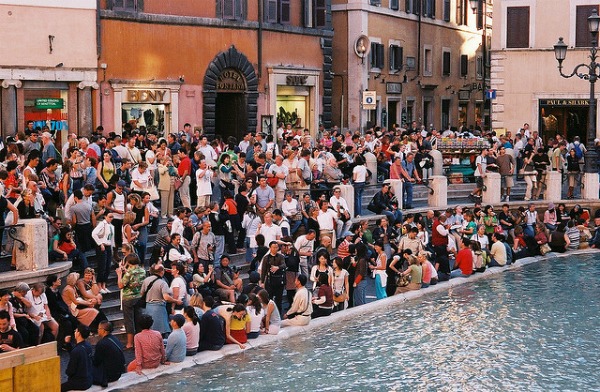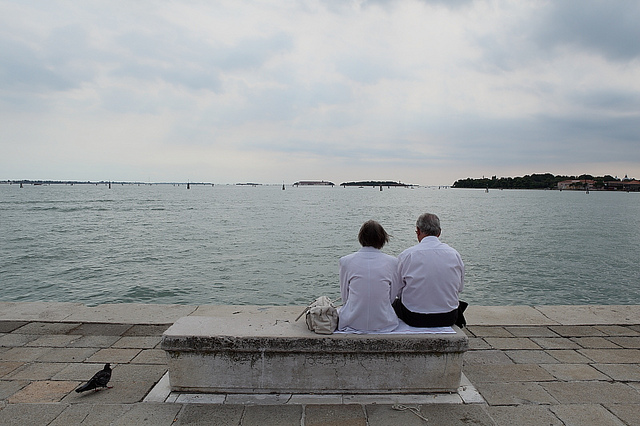 Writing an Italy travel guide means being the recipient of lots of Italy travel questions. Most of them can be boiled down to one simple thing, regardless of topic:
Writing an Italy travel guide means being the recipient of lots of Italy travel questions. Most of them can be boiled down to one simple thing, regardless of topic:
What should I do?
When I was asked, therefore, to write up some Italy DOs and DON’Ts for a World Nomads blogging project (explained at the bottom of the page), I immediately said yes.
I’m opinionated, and routinely pass on advice to readers about their Italy plans, but I always try to leave the final decisions up to the traveler. I’m not generally a fan of words like “should,” so although I have my own personal DOs and DON’Ts when it comes to Italy I tend to offer them with caveats – which is what I did here.
I couldn’t help it.
Here, then, are four Jessica-on-her-soapbox Italy DON’Ts followed by one very big Italy DO.

This is not me telling you to skip the popular cities. This is me telling you that if you go to only the popular cities then I don’t want to hear you complaining about tourist crowds. That kind of thing always makes me cranky.
Geographically speaking, Italy may take up a fraction of the world’s land mass – but the vast majority of the country remains essentially ignored by most tourists. Check off the big-deal sights if that’s part of your goal, but then – if you’re looking for a dose of real life – get your nose out of the guidebook and look instead at a map. See that town shown on the map, the one that’s not listed in your guidebook? Go there.
Italy rewards those who follow their nose, who duck down squirrelly back lanes, who travel without checklists. Sure, you’ll have a great trip if you see the popular cities – they’re popular for a reason, after all – but you’ll give yourself a far better chance of experiencing the magic of Italy if you give in to the possibility of serendipity.
>> Wanna know what part of Italy most travelers skip, but where most of the bargains are? Southern Italy.

Every time I hear about someone visiting Italy who complains that the food isn’t as good as it is back home at the Olive Garden, a little part of me dies inside.
Italians take food seriously, so there’s no reason for you to do any differently during your trip. But there are some in Italy (as is the case anywhere) who are happy to take advantage of people who don’t know any better by serving sub-par food and charging a fortune for it. Restaurants like this are most often found in super-touristy parts of popular cities, and although this isn’t always true you can almost always spot them because their menus are on display out front, translated into seven thousand languages.
Or, y’know, a lot of languages.
You don’t have to speak Italian to eat well in Italy, you just have to be curious. Wander through a street market to see what produce or fish looks freshest, note what it’s called, and then you know what the local in-season specialty is to look for on the menu at lunch or dinner. Do a modicum of research before you leave to find out what dishes a city or region is famous for, and you’ll eat your way to understanding the culture. Bring a menu decoder or a little phrasebook along to help you figure out what’s on that Italian-only menu. And always go into a restaurant with a smile and a sense of adventure – friendly waiters love telling customers what’s good.
Finally, repeat after me: Olive Garden is not Italian food. If you like Olive Garden, that’s fine. (I suppose.) Just don’t compare it to the food you’ll get in Italy. Please.
>> Learn more about Italian food, including why there’s no spaghetti and meatballs on the menu.

Italian is one of those glorious languages that’s a pleasure to listen to, but it also gives us all a false sense of security. See, we think we can get by simply adding a vowel to the end of English words – or assume that because we regularly order things like “venti” drinks at Starbucks we know a few things about Italian.
Reality check: you might know words like “spaghetti” and “biscotti,” but don’t get too comfortable.
As I said above, you don’t have to speak Italian to travel in Italy. You can get by just fine with a few polite words and a phrasebook. Outside the touristy cities, however, you’ll find most people don’t speak any English at all – or are reluctant to use what words they know. Italians are, almost to a person, incredibly pleased with travelers who attempt to speak their language, so don’t be shy. But make sure you’re using the right niceties – saying “ciao,” for instance, isn’t something you want to do all the time. It’s a word we’re incredibly familiar with, and its origins are such that some (especially older generations) consider it impolite.
So while you shouldn’t assume everyone understands English, or let your nerves keep you from speaking a few Italian lines from your phrasebook, remember you’re an unofficial ambassador for your country. Learn how to be polite.
>> Find out why I call Italian the “WYSIWYG” language – and what my favorite Italian swear words are.

Of all the possible DON’Ts for this list, I’ll wager this is the one that’s ignored most often. It’s easy to understand why, too. So many travelers I talk to have a tiny amount of vacation time (thanks so much, American culture) that they feel compelled to cram as much as physically possible into their two weeks (if that), and when I suggest that they cut out a destination or two and spend more time in the other places they’re already visiting they balk.
I get it. I do. And I’m still going to give out the same advice.
Remember what I said earlier about there being rewards for people who throw away the checklist? I’m not trying to be woo-woo here, I genuinely believe that you will enjoy your trip more if you slow down and leave a little room in your itinerary for something unexpected to happen. Think of the dinner parties you’ll go to in the months following your trip, where people ask what you did in Italy – instead of rattling off the same list of places that everyone goes, you’ll be able to tell a story of the pretty little town you visited on a day trip because it wasn’t in the guidebook, or the prosciutto festival you heard about and went out of your way to attend, or the wrong turn that led to the fabulous trattoria that led to a jovial hand-signal conversation with the owner that led to an extra-large helping of dessert.
The point is that packing your days from end to end with stuff to do before you even land in the country is the pathway to unhappiness. Treat each place – in Italy and elsewhere – as if you’ll come back someday to explore further (whether you do or not isn’t the point). Tick off the major things on your I absolutely have to see this or I’ll go home disappointed list, and then let fate handle the rest of the trip planning for you. You’ll enjoy your trip – and Italy – more as a result.
>> Get my tips for planning the perfect Italy itinerary, no matter where you’re going or for how long you’ll be in the country.

Y’know what? This is your holiday we’re talking about here, not mine.
I will continue to get questions about Italy trip planning, and I’ll continue to dole out answers. I’d also like to think that if my answer didn’t suit you, you’d say, “Yeah, piss off” – nicely, of course – and go right on planning your trip your way.
I like that kind of moxie.
I am very much a “teach a traveler to fish” sort of person – I prefer to give you the tools to figure out the answers to your questions rather than giving you the answers directly. If that means you come to a different conclusion than I would, that’s fantastic. We can’t all take the same vacation. That would be boring.
Don’t let anyone bully you into taking the trip they want to take. Listening to someone’s advice doesn’t mean you have to follow it.
In other words, read my tips and suggestions throughout the WhyGo Italy site, ask me questions when you don’t find what you’re looking for, and if you don’t like my answers then please ignore me and plan your trip however you’d like.
Share your local expertise and join the Blog your Backyard project! Become an ambassador for your country (home or adopted) by sharing your experiences and tips with other travelers. Submit your entries starting August 8th on WorldNomads.com for a chance to win one of 20 awesome excursions with Urban Adventures. Plus, if you want to share more of your local expertise or get answers to all of your travel questions, download the FREE ‘Ask A Nomad’ iPad app.
photos, top to bottom, by: Dimitri N., Chris Yunker, thepinkpeppercorn, zoonabar, Roberto Tim, Pacopus